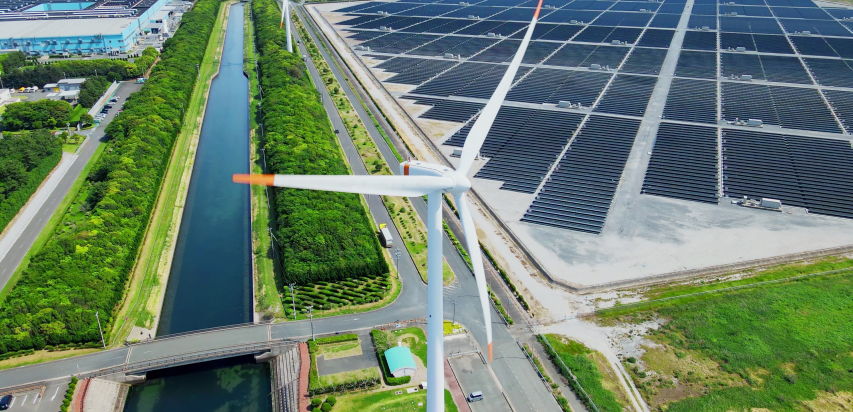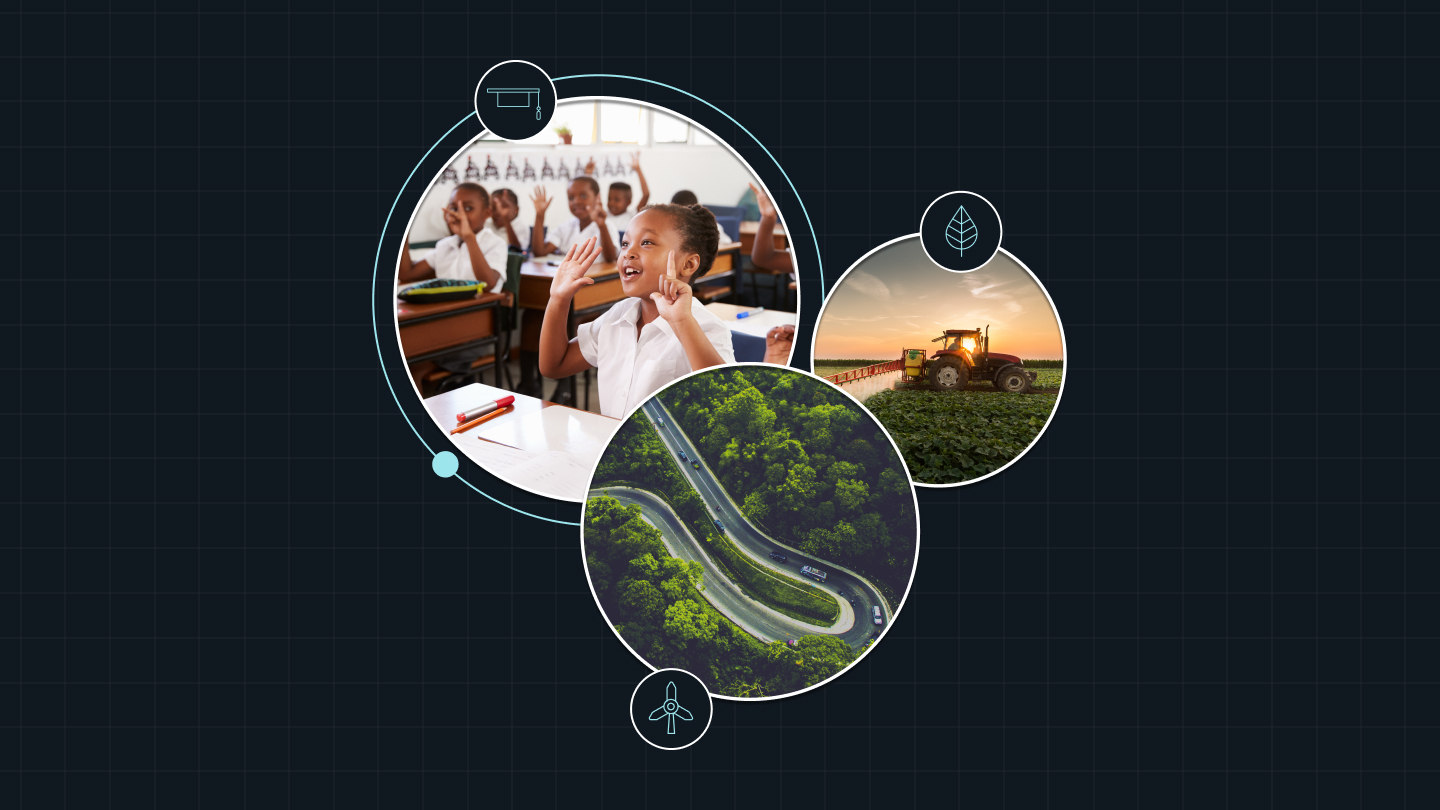
This article is authored by Fuat Savas, Co-Head of J.P. Morgan’s Infrastructure Finance and Advisory team. The views and opinions expressed herein are his own and may differ from those of J.P. Morgan, its businesses or its personnel.
Ahead of COP28, there is an underrated opportunity to turbocharge clean energy deployment and sustainable infrastructure projects in emerging markets and developing economies (EMDEs).
The attention around this topic often focuses on the trillions of dollars of private capital needed to support the energy transition. But the true missing link in scaling up financing of clean energy and sustainable infrastructure is a robust supply of bankable projects.
In light of the low cost of capital for energy transition investments in many EMDEs and the delays in using capital allocated to this space, it would appear that lack of capital is not the bottleneck. This low cost of capital is one of the factors supporting record-low bids for renewable tariffs in South Africa, Brazil, India and Uzbekistan, for example. Even in low-income countries, the abundance of development finance means the few projects that are actually ready for investment benefit from plentiful, affordable, long-dated funding.
Cultivating a pipeline of bankable projects – many of which are critical for both climate change adaptation and mitigation – requires tackling project implementation hurdles. This involves conceptualization, prioritization, feasibility and socio-economic impact assessments, and financial and contractual structuring. In many cases, extensive technical expertise is needed to meet environmental, social, regulatory and economic factors, as well as implementation readiness. These steps can require years of studies and consultation before projects can start construction.
Although there is no quick fix that will unclog the project bottleneck, there are a number of actions that can be taken in order to materially speed up project preparation and development. Three strategies in particular could be more critical to scaling energy transition investment in EMDEs than any amount of capital alone.
Fuat Savas shares innovative proposals that can reshape the future of infrastructure investment and development.
Scaling up effective public sector programs
First, consideration should be given to investing in programs capable of creating scale in project development. One such program is the Global Infrastructure Facility (GIF), housed within the World Bank.
Serving as a global collaboration platform, the GIF provides funding and advisory support to EMDE governments on the process of selecting, designing, structuring and bringing high-quality, sustainable and financially viable infrastructure projects to market. Created at the G20 in 2014, the GIF is specifically designed to tackle private sector mobilization at scale.
Funding from the GIF has led to $101 of private sector financing for every $1 spent on project development, underscoring the significant multiplier effect of its impact and highlighting a highly efficient use of public funds. These impressive results come from 166 advisory activities approved in 67 countries, culminating in the financial closure of 16 projects, with an additional 5 currently in commercial close. As the overall portfolio matures, the GIF anticipates more closings in the near future.
By their very nature, GIF activities don’t lend themselves to ribbon-cutting photo ops. It’s harder to capture the public imagination by extolling the value of legal harmonization studies. But these types of project preparation activities are critical to implementing transformative projects. And it would be relatively straightforward to scale the GIF up by five times to $1bn and turbocharge its project development activities. The GIF’s potential to drive real world outcomes could be more fully realized with the financial support of an expanded base of donor countries.
One example of the GIF’s support is a recent electricity generation project in Malawi, a country with an electricity grid connection rate of only 12%. Severe power outages, especially during low rainfall periods, hamper socio-economic progress. To ameliorate this situation and improve access to electricity, the government of Malawi set out to develop the 350MW Mpatamanga Hydropower Project via a public private partnership contracting model. Funding from the GIF supported critical elements such as project design, environmental and social studies and the development of the concession agreement. Mpatamanga is expected to double Malawi’s electricity generation capacity upon completion, fostering grid stability and enabling future renewable energy integration. On the back of the GIF’s investment, a successful collaboration between the government of Malawi, IFC and private sector sponsors is set to mobilize $600 million in private and blended finance capital for project construction.
Discover the role of public-private partnerships in reaching sustainable development and climate objectives. Hear insights from experts at the Global Infrastructure Facility (GIF), Zhero and J.P. Morgan.
Creating an investable asset class
Upstream project development and preparation accelerators like GIF are an important enabler of the second key factor for unlocking scale in sustainable infrastructure – establishing EM project development as an investable asset class for private, concessional and philanthropic capital.
Just as venture capital is a complement to government-led research and development in the technology sector, a new class of “project capital” could complement governments in the time-intensive and risky business of project development. Project capital funds could back developers of greenfield projects across EMs. The developer’s goal would be to bring projects to an investable stage, sell its stake to a builder / owner and recycle capital into new project development. This would be a private version of the IFC’s InfraVentures business, and has some precedent. Climate Fund Managers, for example, manages two climate funds that each have project development platforms incorporated as part of their innovative blended finance structures. Allied Climate Partners has also recently announced a non-profit “fund of funds” focused on project development.
Scaling these private-sector efforts and demonstrating the success of these projects would go a long way in encouraging more entrepreneurs to focus on project design and development.
Harnessing people power for project development
A third and key factor is the human capital component. EM public sector bodies are not always equipped to translate their national climate goals into priorities. This is a complex process that involves designing and prioritizing appropriate projects, creating operational structures that place risk effectively, running tenders for project sponsors/investors and ultimately evaluating proposals.
An innovative public-private partnership could be formed to tackle the human capital problem head-on. Imagine an 8-12 week “Project Development Academy” program housed within a global university, with instructors volunteered by multilateral development banks, academia and the private sector. The student body could be chosen by the World Bank and would be made up of public sector officials from ministries of energy, project delivery units and public utilities. Courses would build the skills needed to translate national climate goals into tangible projects: project planning, procurement methods, project finance, environmental and social standards, etc. “Students” would go back to their home countries equipped to translate their national climate plans into tangible projects, and with a strong network of public and private sector experts, developers and financiers.
Conclusion
Sustainable project development is supposed to be difficult and to take a long time because many factors must be addressed to deliver strong economic, social and environmental outcomes. Projects supporting the world’s decarbonization efforts will need large tracts of land (e.g., solar and wind farms, transmission lines, CO2 pipelines) and will frequently impact rich ecosystems (e.g., when mining energy transition metals). Governments, project developers and financiers should evaluate the environmental and social impacts of these projects, consult with local stakeholders and design projects that minimize harm to society and the environment.
In order for capital to flow into climate change mitigation and adaptation efforts on the road to COP28 and beyond, work is needed today on the difficult task of project development. Building on proven programs like GIF, supporting the evolution of EM project development and empowering people can close the project development gap and accelerate economic and climate progress.
Related insights
-

Investment Banking
Center for Carbon Transition
J.P. Morgan’s center of excellence that provides clients the data and firmwide expertise needed to navigate the challenges of transitioning to a low-carbon future.
-

Investment Banking
Development Finance Institution
Financing opportunities with anticipated development impact in emerging economies.
-

J.P. Morgan Podcasts
Leaders across J.P. Morgan share their views on the events that are shaping companies, industries and markets around the world.
This material (including market commentary, market data, observations, views or the like) has been prepared by the author, Fuat Savas, an employee within the Investment Banking Group of JPMorgan Chase & Co. It has not been reviewed, endorsed or otherwise approved by, and is not a work product of, any research department of JPMorgan Chase & Co. and/or its affiliates (“J.P. Morgan”). Any views or opinions expressed herein are solely those of the individual author and may differ from the views and opinions expressed by other personnel, businesses, departments or divisions of J.P. Morgan. This material is for the general information of our clients only and is a “solicitation” only as that term is used within CFTC Rule 1.71 and 23.605 promulgated under the U.S. Commodity Exchange Act.
RESTRICTED DISTRIBUTION: This material is distributed by the relevant J.P. Morgan entities that possess the necessary licenses to distribute the material in the respective countries. This material is proprietary and confidential to J.P. Morgan and is for your personal use only. Any distribution, copy, reprints and/or forward to others is strictly prohibited.
This material is not intended to be comprehensive and does not constitute investment, legal or tax advice, nor does it constitute an offer or solicitation for the purchase or sale of any financial instrument or a recommendation for any investment product or strategy. J.P. Morgan does not make representations or warranties as to the legal, tax, credit, or accounting treatment of any such transactions, or any other effects similar transactions may have on you or your affiliates. You should consult with your own advisors as to such matters.
Factual information contained in this material has been obtained from sources believed to be reliable but no representation or warranty is made by J.P. Morgan or the author as to the quality, completeness, accuracy, fitness for a particular purpose or noninfringement of such information. In no event shall the author or J.P. Morgan be liable (whether in contract, tort, equity or otherwise) for any use by any party of, for any decision made or action taken by any party in reliance upon, or for any inaccuracies or errors in, or omissions from, the information contained herein and such information may not be relied upon by you in evaluating the merits of participating in any transaction. All information contained herein is as of the date referenced and is subject to change without notice. Any market statistics are based on announced transactions.
J.P. Morgan may have positions (long or short), effect transactions, or make markets in securities or financial instruments mentioned herein (or options with respect thereto), or provide advice or loans to, or participate in the underwriting or restructuring of the obligations of, companies and governments mentioned herein. All transactions presented herein are for illustration purposes only.
The use of any third-party trademarks or brand names is for informational purposes only and does not imply an endorsement by JPMorgan Chase & Co. or that such trademark owner has authorized JPMorgan Chase & Co. to promote its products or services.
J.P. Morgan is the marketing name for the investment banking activities of JPMorgan Chase Bank, N.A., J.P. Morgan Securities LLC (member, NYSE), J.P. Morgan Securities plc (authorized by the Prudential Regulation Authority and regulated by the Financial Conduct Authority and the Prudential Regulation Authority), J.P. Morgan SE (Authorised as a credit institution by the Federal Financial Supervisory Authority (Bundesanstalt für Finanzdienstleistungsaufsicht, BaFin) and jointly supervised by the BaFin, the German Central Bank (Deutsche Bundesbank) and the European Central Bank (ECB)), J.P. Morgan Securities Australia Limited (ABN 61 003 245 234/AFS Licence No: 238066 and regulated by Australian Securities and Investments Commission) and their investment banking affiliates. J.P. Morgan Securities plc is exempt from the licensing provisions of the Financial and Intermediary Services Act, 2002 (South Africa).
For Brazil: Ombudsman J.P. Morgan: 0800-7700847 / ouvidoria.jp.morgan@jpmorgan.com
For Australia: This material is issued and distributed by J.P. Morgan Securities Australia Limited (ABN 61 003 245 234/ AFS Licence No: 238066) (regulated by ASIC) for the benefit of “wholesale clients” only. This material does not take into account the specific investment objectives, financial situation or particular needs of the recipient. The recipient of thismaterial must not distribute it to any third party or outside Australia without the prior written consent of J.P. Morgan Securities Australia Limited.